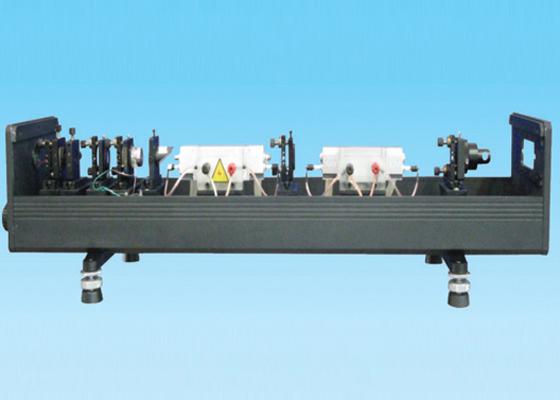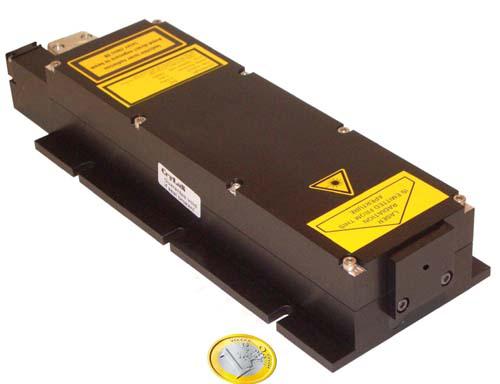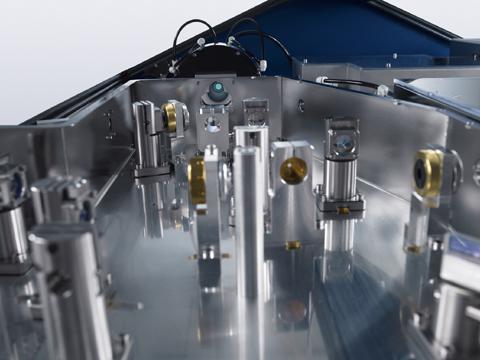Generally speaking, the continuous laser equipped with a Q-tuner that can be a pulsed laser, but it is not as simple as talking. Here we need to understand the working principle of laser Q-switching technology and tunable lasers.

New laser Q-switching technology is continuously developed and applied
1. A tunable laser is a laser that can continuously change the laser output wavelength within a certain range. A continuous laser is compared to a pulsed laser. Continuously, the output laser is continuously open, and the pulse is similar to a camera flash. The state of the switch, the flashing state of the flashing light, the tunable or continuous, and the output of a specific wavelength may not be continuous;
2. the laser Q-switching is a technique that compresses the laser energy into pulses of extremely narrow width, thereby increasing the peak power of the laser source by several orders of magnitude. The basis of laser Q-switching technology is a special kind of optical component--fast cavity optical switch, generally called laser Q-switch or Q-switch. The purpose of laser Q-switching technology is to compress the pulse width and increase the peak power.
The Q value is an indicator for evaluating the quality of the optical cavity in the laser, a quality factor. Q value definition = 2π × energy stored in the cavity / energy lost per oscillation period.
The higher the Q value, the lower the pumping threshold required, ie. the easier the laser will start to oscillate. In a typical pulsed solid-state laser, if no special measures are taken, the oscillation duration of the pulsed laser in the cavity is approximately the same as the pulse time of the optical pump (about the order of milliseconds), so the pulse power level of the output laser is always limited.
If a special technique is used to deliberately reduce the Q value of the resonant cavity without laser oscillation after a pulse pump starts, the degree of particle inversion in the working substance will continue to increase through the accumulation of the optical pump. Large, then at a particular selected moment, suddenly rapidly increase the Q value of the resonant cavity, causing rapid laser oscillation in the cavity, accumulating to a higher degree of inverted particle number energy will be concentrated in a short time interval It is quickly released, resulting in a laser output with a very narrow pulse width and high peak power. To achieve the above objectives, the most common method is to introduce a fast optical switch--Q switch in the resonant cavity, which is in the "off" or "low Q" state for a period of time after the start of the optical pump pulse. The oscillation is formed and the population inversion is continuously enhanced. When the degree of particle inversion reaches a maximum, the Q-switch in the cavity suddenly becomes "on" or "high Q" state, thereby forming an instantaneous strong laser oscillation in the cavity, and generating a so-called Q-switched laser pulse output to the cavity.

Pulse width can modulate repetition rate up to 500Hz
The following describes several commonly used Q-switches and working principles. Active Q is generally controlled by electro-optic crystal Q, acousto-optic crystal Q, passive Q is generally absorbable dye Q, Cr4: YAG saturable absorption Q.
Electro-optic Q-switching technology
Using the electro-optic effect of the crystal, a step voltage is applied to the crystal to adjust the emission loss of the photons in the cavity. When starting work, a voltage is applied to both ends of the crystal. Due to the polarization effect of the crystal, the loss of the resonant cavity is large, the Q value is low, the laser does not oscillate, the energy level of the laser continuously accumulates the number of particles, and the Q light is turned off. At a certain moment, the voltage across the crystal is suddenly removed, the cavity is abruptly changed to low loss, the Q value is high, and the Q switch is turned on to form a giant pulse laser. A typical Nd:YAG, electro-optical Q-switched laser has an output light pulse width of about nanoseconds and a peak power of several megawatts to tens of megawatts. Suitable for pulsed pump lasers.
Sound and light Q-switching technology
Acousto-optic Q-switching technology is to complete the Q-switching task by using the Bragg diffraction principle of the acousto-optic device. The acousto-optic Q-switching device consists of an acousto-optic interaction medium (such as fused silica) and a transducer bonded thereto. The transducer converts the high frequency signal into an ultrasonic wave. Inserting an acousto-optic Q-switching device into the laser cavity can produce high diffraction loss. At this time, the cavity has a very low Q value, and the Q switch is turned off. When the laser high-energy level accumulates a large number of particles, the ultrasonic wave is removed, the diffraction effect disappears immediately, the loss decreases, and the Q-opening is turned on, and the laser giant pulse is formed. Acousto-optic Q-switching technology is used for low-gain lasers to obtain high-frequency pulses with pulse widths of tens of nanoseconds and powers of several hundred kilowatts. However, the switching ability of high-energy lasers is poor, and it is not suitable for high-energy Q-switched lasers.
Saturable absorption dye Q
Some dye media have abrupt absorption saturation characteristics. When the wavelength is near the absorption peak, the incident light signal is weak, the dye medium exhibits a very obvious absorption tendency to the incident light (equivalent to being in the "off" state); when the incident light When the signal is enhanced to a certain extent, the dye medium suddenly exhibits a significant absorption saturation tendency to the incident light (equivalent to an approximately transparent "on" state). By utilizing the above characteristics of certain dyes, it can be placed in the resonant cavity to function as a Q-switch. A period of time after the start of the optical pump pulse, the initial stimulated emission signal of the working substance is weak, and the dye switch is turned off. When the degree of reversal of the number of particles of the working substance is maximized, the intensity of the stimulated emission is increased enough to cause the dye switch to be in an absorption saturation state (or "bleaching" state), thereby turning on the oscillation circuit and forming a Q-switched laser in the cavity. Output. The advantage of the dye Q-switch is that the device is simple and low in cost. The shortcoming is that the photochemical stability is poor, and the Q repeatability is not high.
Cr4:YAG saturable absorption to adjust Q
Cr4:YAG crystals have strong saturable absorption characteristics in a certain range, so they can be used as passive Q-switching elements for lasers of specific wavelengths. Compared with other passive Q-switched components, Cr4:YAG crystal has the advantages of large absorption cross section, good saturable absorption stability and convenient use. Therefore, it is suitable for semiconductor-pumped solid-state lasers to generate passive Q-switched, and passively Q-switched to lasers. The single longitudinal mode also has a certain auxiliary effect.

Continuous laser with Q-tuner can be a pulsed laser
The new laser Q-switching technology has been continuously developed and applied, including active-pass Q-switching with active Q-switching and passive Q-switching, dual-pass Q-switching technology, Q-switching mode-locking technology, and Q-switching technology in semiconductor pumping. The application in pulsed lasers has drawn great attention.
What is the difference between a quasi-continuous (QCW) laser and a continuous laser and a pulsed laser?
Continuous fiber lasers can be single-mode or multi-mode. High-quality beams produced in a single mode can be used in the field of materials or in the atmosphere, while multimode industrial lasers have high power. If the application does not require high power density. , then the higher total power of the multimode will be an advantage, such as heat treatment for cutting and welding.
Long-pulse lasers are called quasi-continuous lasers that produce pulses of the order of ms with a duty cycle of 10%. This makes pulsed light more than ten times higher than continuous light, which is very advantageous for applications such as drilling. According to the pulse width, the repetition frequency can be modulated up to 500 Hz. Therefore, continuous is continuous output. The quasi-continuous is the pulse output, but the duty ratio of the pulse is relatively large.


